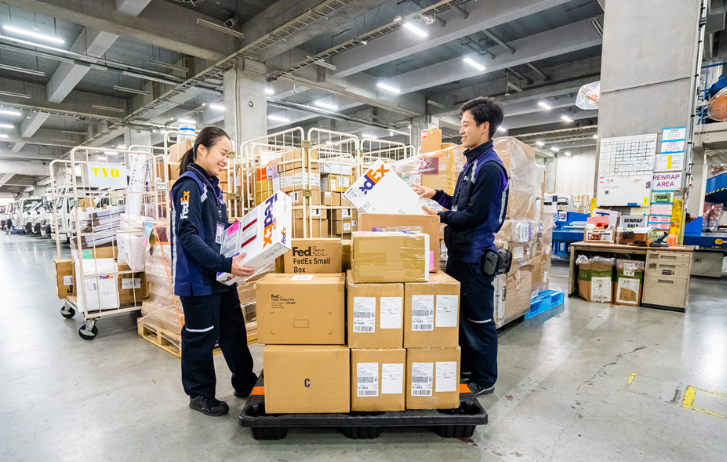
5 Ways SMEs Can Deal With Future Disruption
By FedEx | First published: October 27, 2020 Updated: July 22, 2024
Business agility and resilience are essential for building a strong organizational culture. Is your small business stable enough to withstand future disruption?
- The next global crisis could be just around the corner. Small businesses need to plan for disruption and map out what business recovery looks like.
- Identifying the right business continuity measures will define whether SMEs weather the storm.
- Running a business during a crisis is tough - but preparing for the challenging operating environments to come is essential.
Four years after the outbreak of one of the most devastating global health crises in history, experts warn that the next pandemic may be closer than we think. It’s a sobering thought for businesses and communities who are only just recovering from the impact of COVID-19. We’ve all seen how dramatic and far-reaching pandemics can be for our economies, as well as society at large.
The post-script to these predictions is that, according to analysts, the world is still underprepared for the next major epidemic. And it’s not only governments and healthcare systems that need to worry. For many businesses – particularly start-ups and SMEs who are smaller and more vulnerable to disruption – the risk of financial failure is all too real.
Living in an era defined by disruption
In today’s world, we’ve become accustomed to disruption. It can come from many sources: international conflicts; geopolitics; extreme weather events, or unexpected economic downturns. Some commentators are even predicting the next global recession and the biggest market crash since 2008 as early as next year.
We never know exactly what’s around the corner. But if you’re a business owner, the smart thing to do is plan and prepare for future crises. Putting the right measures in place mitigates negative impact and provides contingencies that may become a lifeline.
From scenario planning to de-centralization of supply networks, there are lots of ways SMEs can build resilience into their business models. Since the last crisis, many digital breakthroughs have emerged, with new tools and data-driven solutions on the market.
Here are five ways SMEs can future-proof operations, and lessen the impact of the next global crisis on their business:
1. Celebrate systemic, small wins in your organization
In the face of a crisis, organizational theorists advocate a gradual, improvisational, quietly persistent approach to change, rather than drastic adjustments.
One tip for leaders and managers is to break down big goals into smaller, more manageable tasks. Make sure to commend team members when they complete small milestones.
This approach motivates colleagues without overwhelming their resolve. It can increase creativity and effectiveness, and help employees manage risks.
2. Take stock of available resources and tools
During a crisis, it’s easy to lose sight of resources already at our disposal. But as well as plotting solutions you already have that could benefit you, explore new ones.
Ask your service provider about tools and services that can help your business continue to run efficiently. Explore the latest AI-driven modeling and predictive tools to carry out a risk analysis of your business. Put together a business recovery plan that covers different outcomes. Make sure you understand what business continuity looks like and how you’ll operate in new and unfamiliar environments.
No two businesses are alike, so learning about customizable, tailored solutions is important.
3. Ensure business continuity by rethinking growth
In uncertain times, it is helpful to build resilient strategies that enable you to grow beyond the bottom line.
- Retain. To remain a brand of choice, meet customers where they are. Identify possible gaps in how your products or services are communicated. Do customers prefer to order via chat instead of a website? Strengthen your digital payment systems and online storefronts to meet the growing preference for contactless transactions.
- Reward loyalty. Giving repeat customers discounts or exclusive promos strengthens your relationship. You can also offer early access or a sneak peek at new products.
- Reevaluate and adapt. There is still plenty of business to be had if you know where to look. This may be the time to create or resell new products and services. Don’t limit yourself to your existing roster of offerings.
- Relationships. Build your network by joining industry associations, seeking cross-sector collaboration, and connecting with relevant suppliers and vendors.
4. Don’t rely on single solutions
One outcome of the last pandemic? SMEs that used only one main supplier, manufacturer, or supply route network had their business operations threatened, with no fallback when something went wrong.
Don’t compromise your ability to keep your business moving. Ensure revenue streams stay open. Move from ‘just-in-time’ to ‘just-in-case’ supply chains. Diversify who you work with and where they are located.
For example, if your main suppliers are in China, consider Southeast Asia or India as secondary sources. If your main customer base is in Europe, consider a proactive strategy to tap other markets such as the US or Australia. Research your target audience and develop a tailored market entry strategy.
5. Focus on the ‘why’
Quick and sound decision-making starts with clear thinking. Knowing the core purpose of your business will help you stay on course and act decisively. Make sure each person on your team is on board.
While recessions and global crises have upended many industries, disruption can be an opportunity to innovate and transform. In difficult times, businesses must rise to the challenge and not just survive, but evolve for the better.
SHARE THIS STORY
- Generative AI: A New Frontier
- How To Ship A Giant Panda
- How To Make Freight Shipments Work For Your Small Business
- The Rise Of Intra-Asia Trade: Opportunities In The China-Southeast Asia Corridor
- Where Do Old Planes Go When They Retire?
- What’s So Dangerous About Coconuts? Your Guide To Dangerous Goods Logistics
Sign up now and save on your shipping rates!
Sign up now and earn discounts by shipping instantly with FedEx Ship ManagerTM at fedex.com.
Recommended For You

4 Ways Small Businesses Can Thrive In A Post-Pandemic World
Consumers expect more personalized delivery services. Here’s how SMEs can meet their expectations and build a resilient and sustainable future.
Read More
5 Ways SMEs Can Future Proof Their Business
From a stronger e-commerce strategy to re-examining working from home, explore the biggest contributors for post-COVID business recovery for SMEs.
Read More
How To Build Resilient And Sustainable Supply Chains
Stable, resilient supply chains stand the test of time. A transformative and sustainable approach is required to ensure longevity.
Read More


